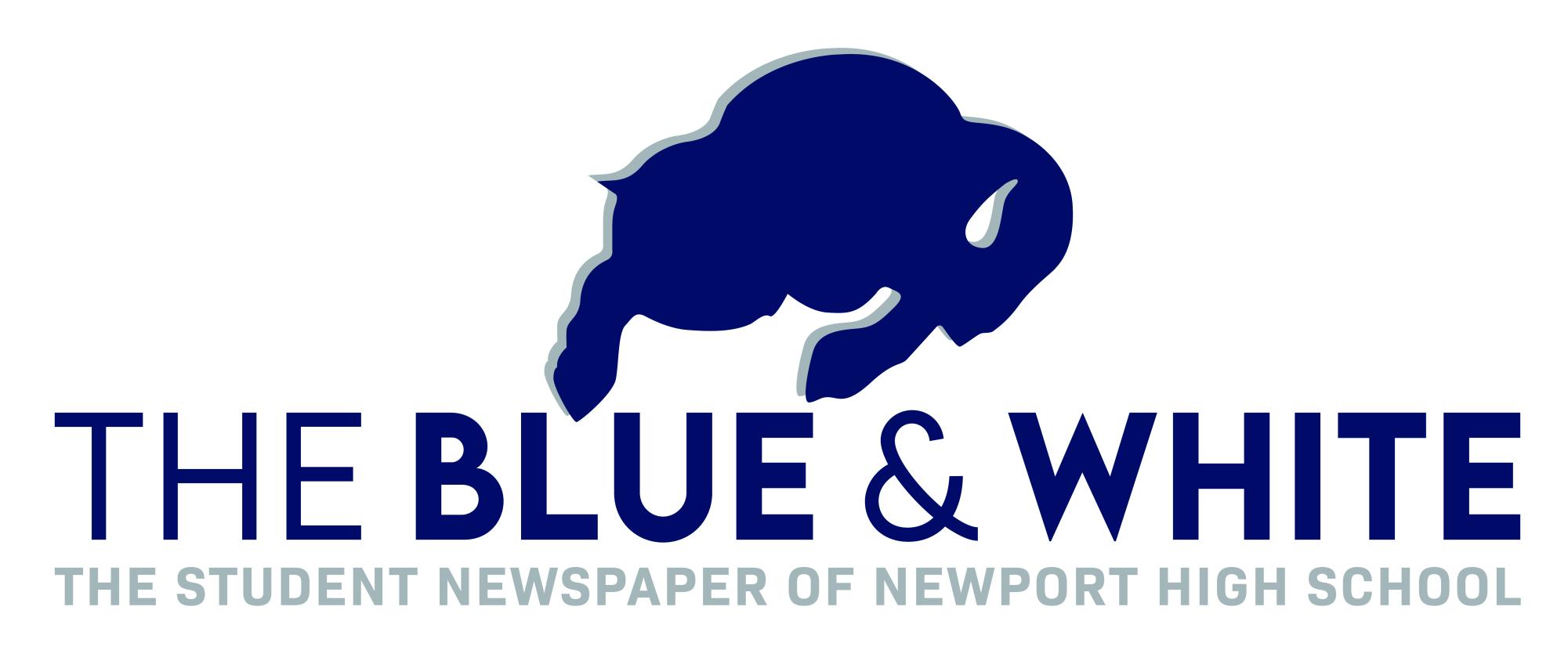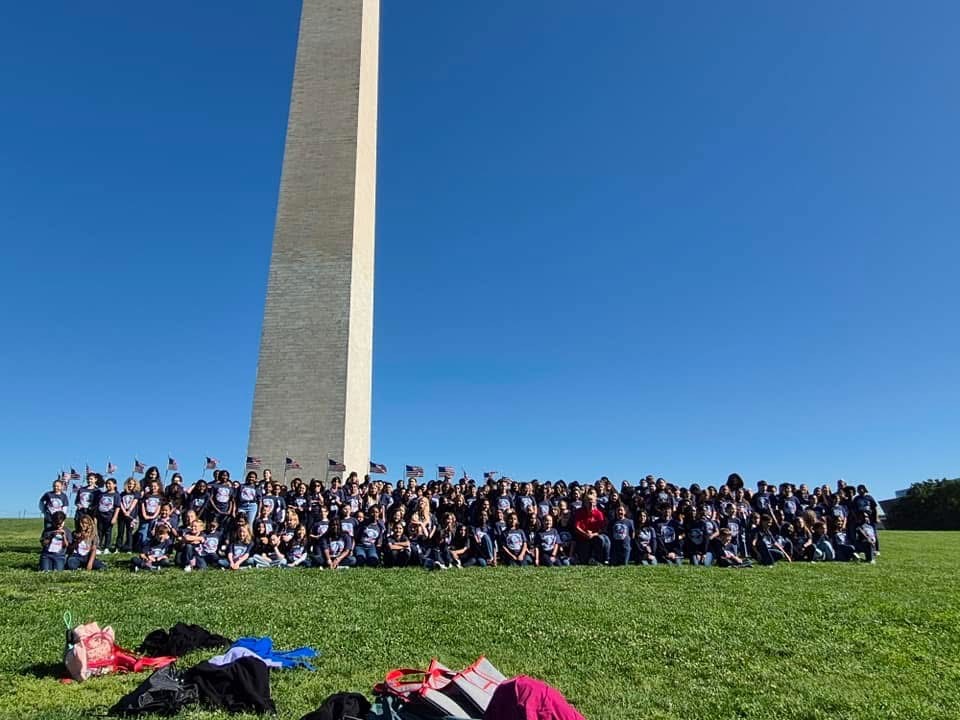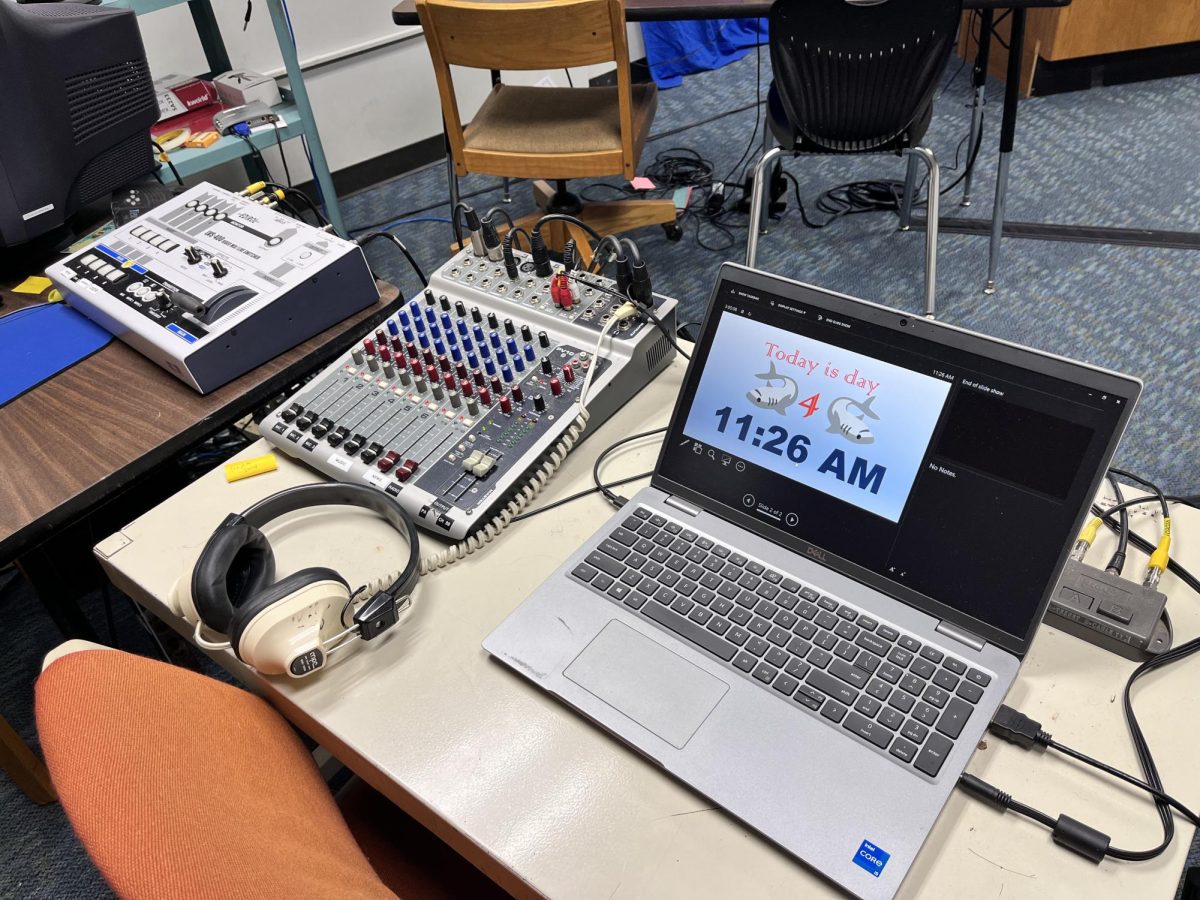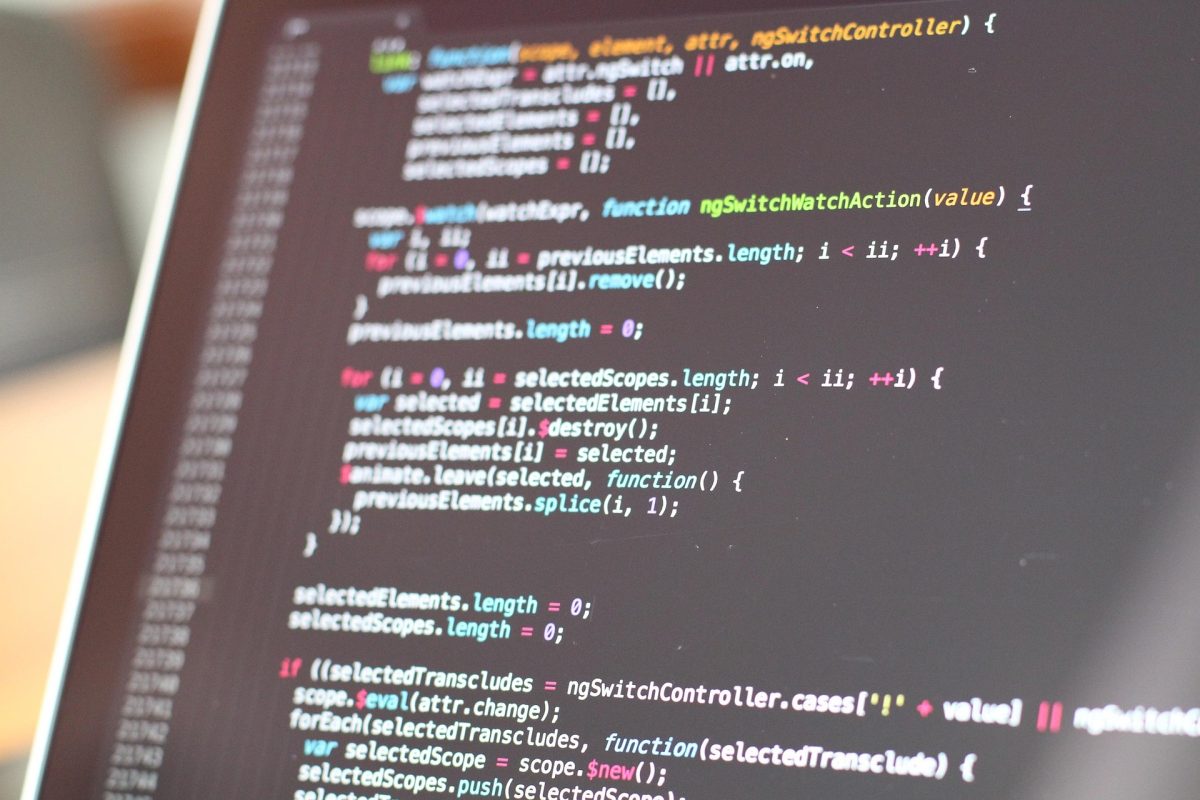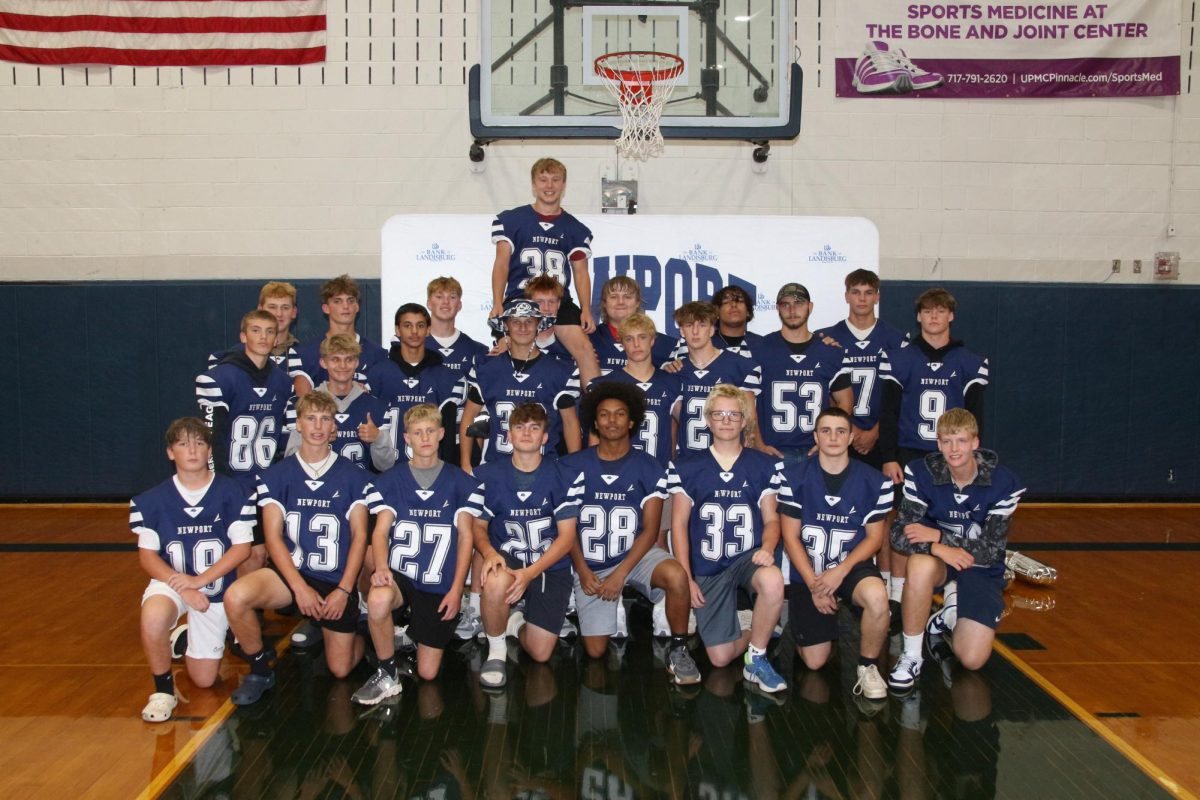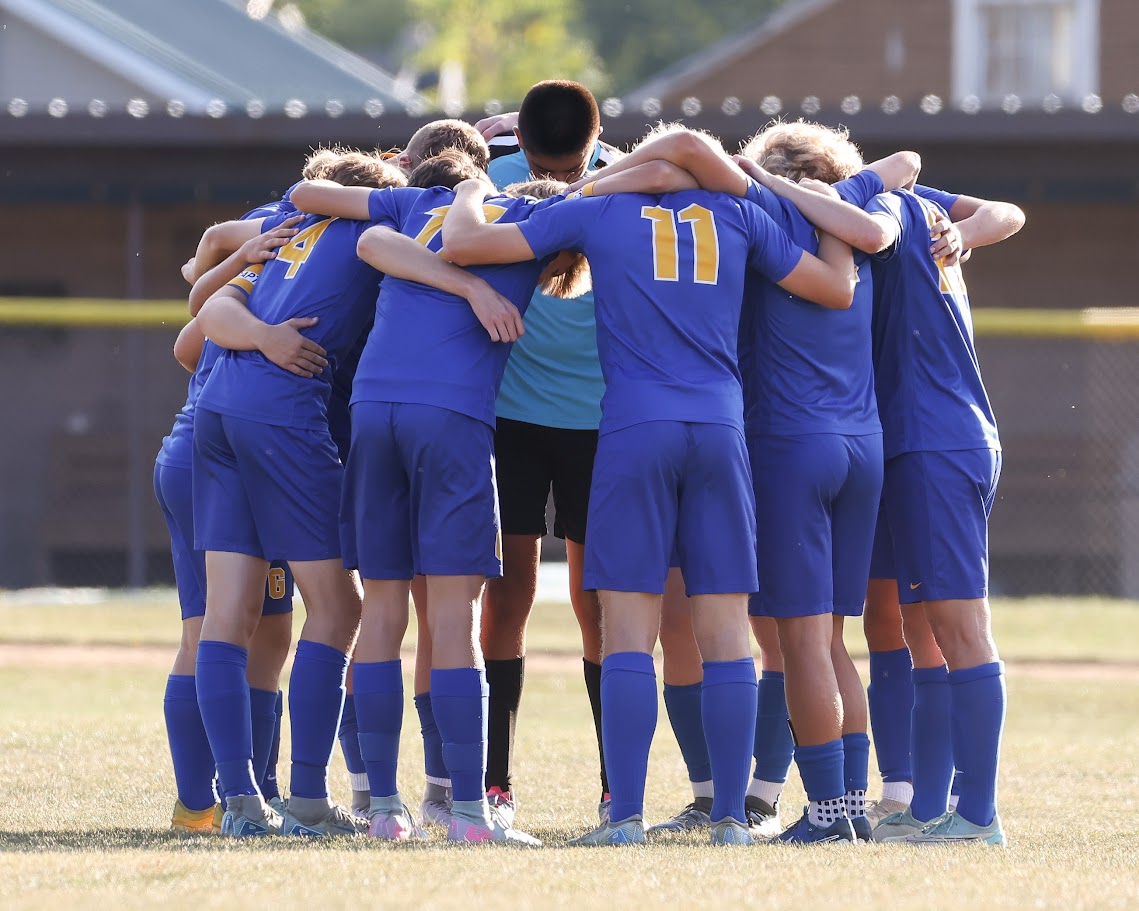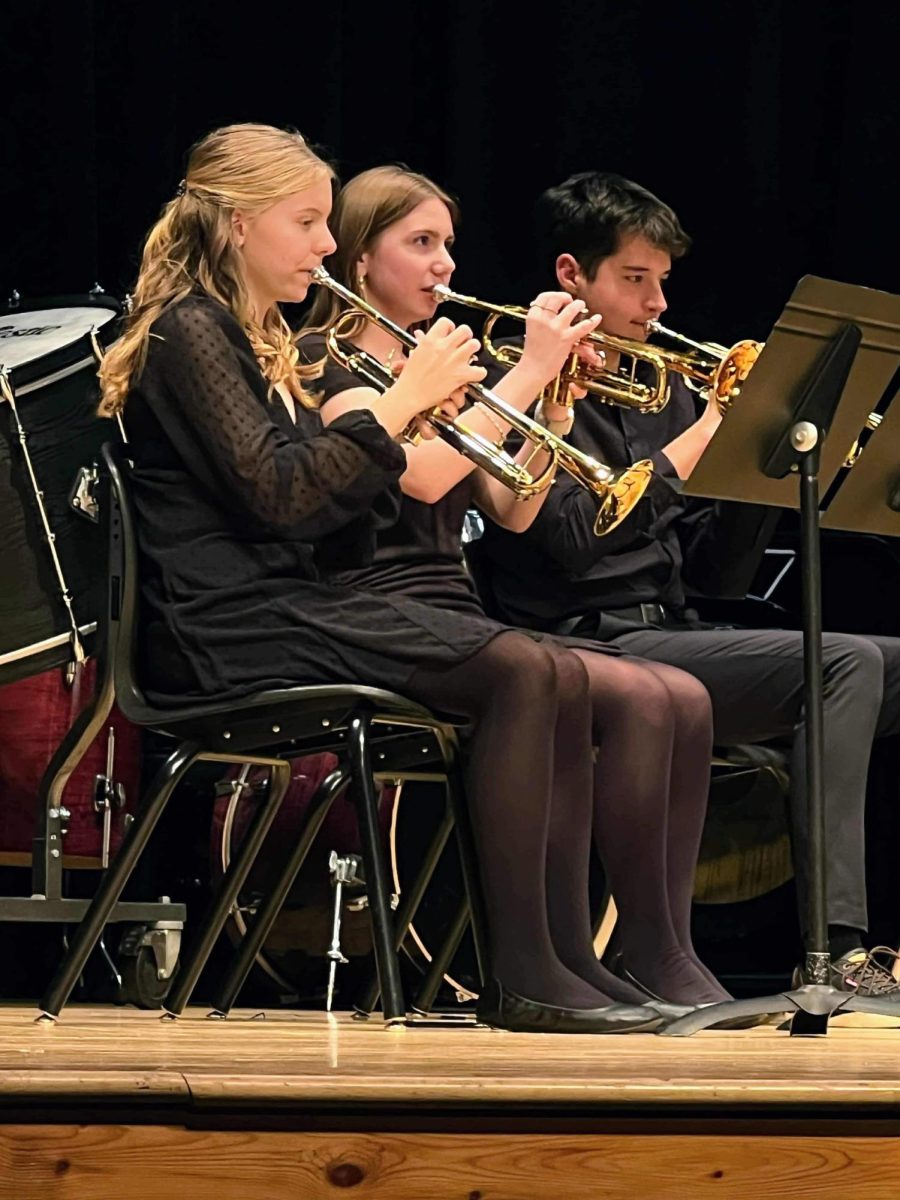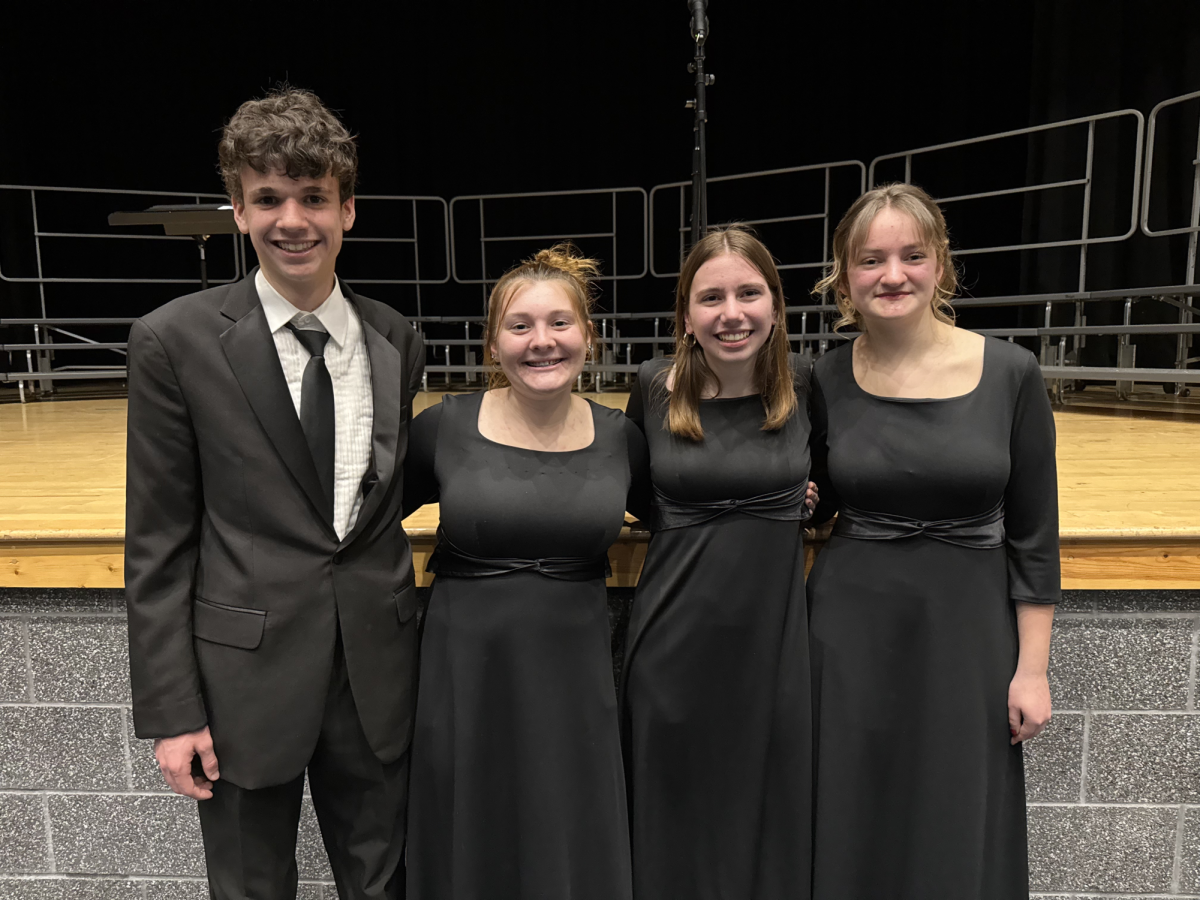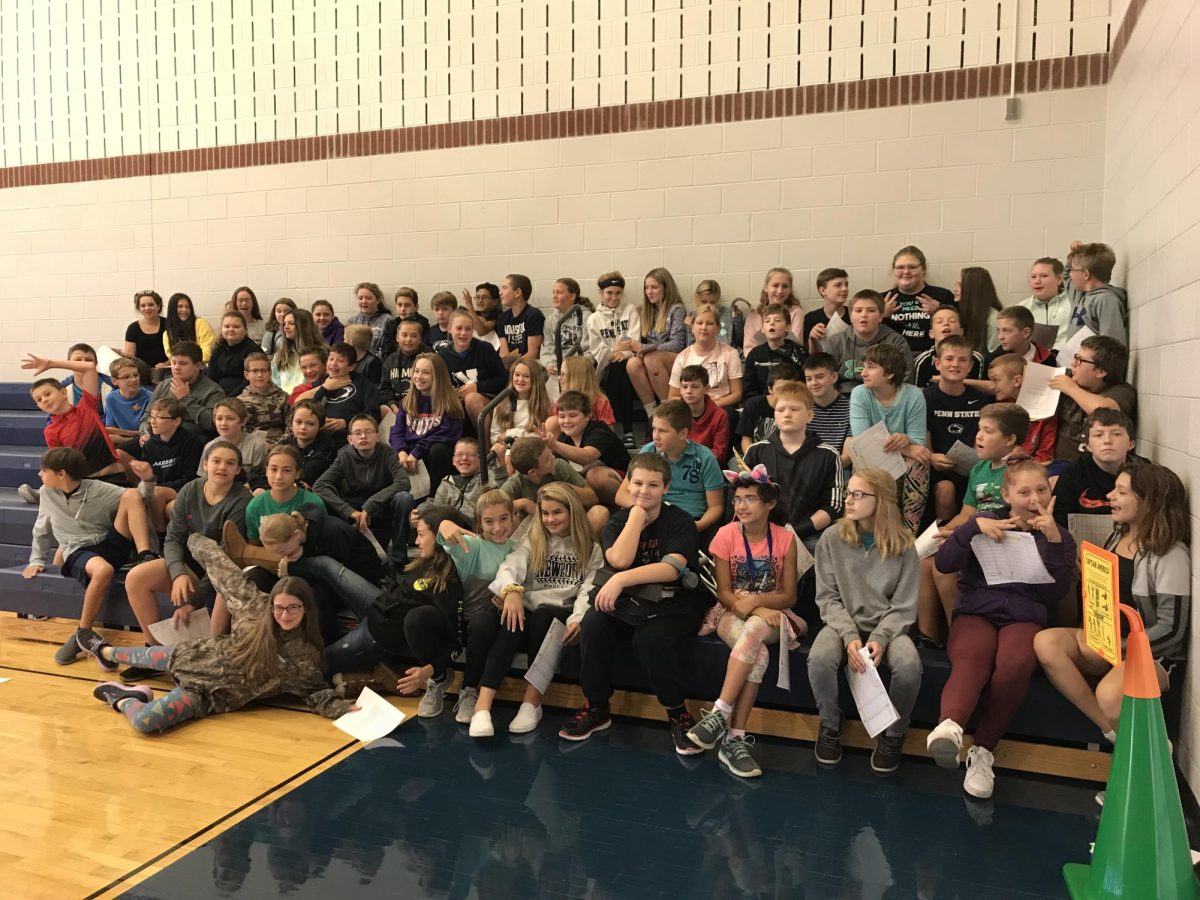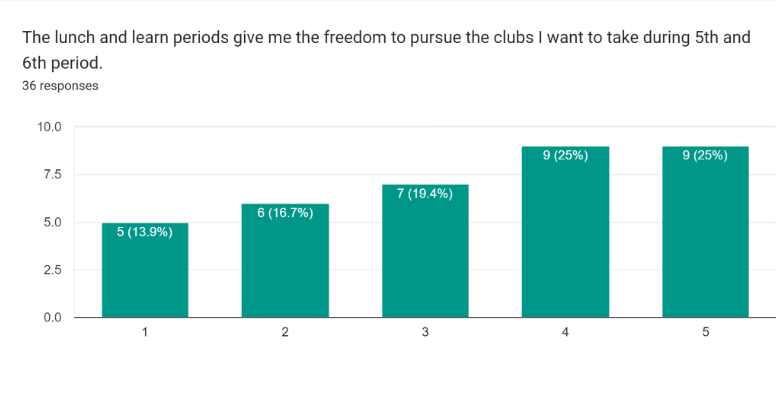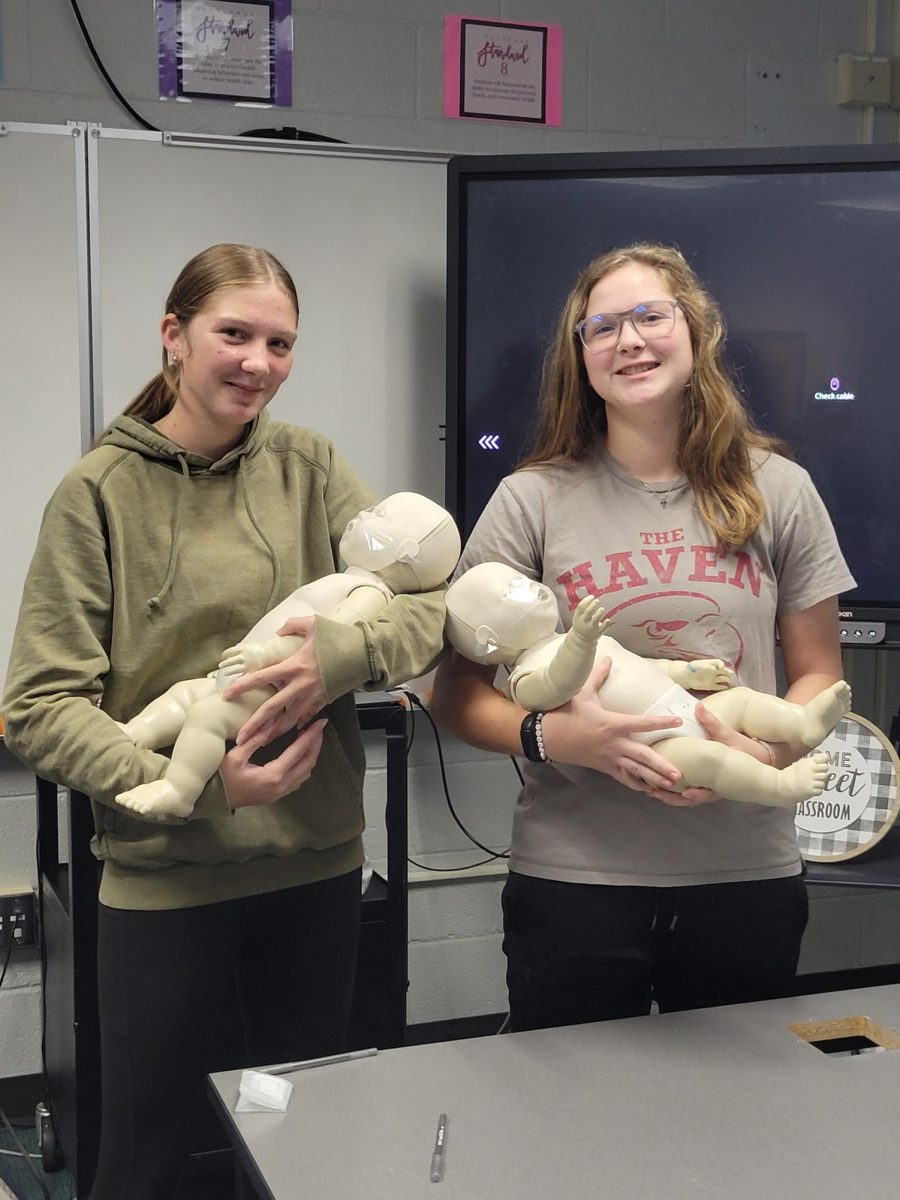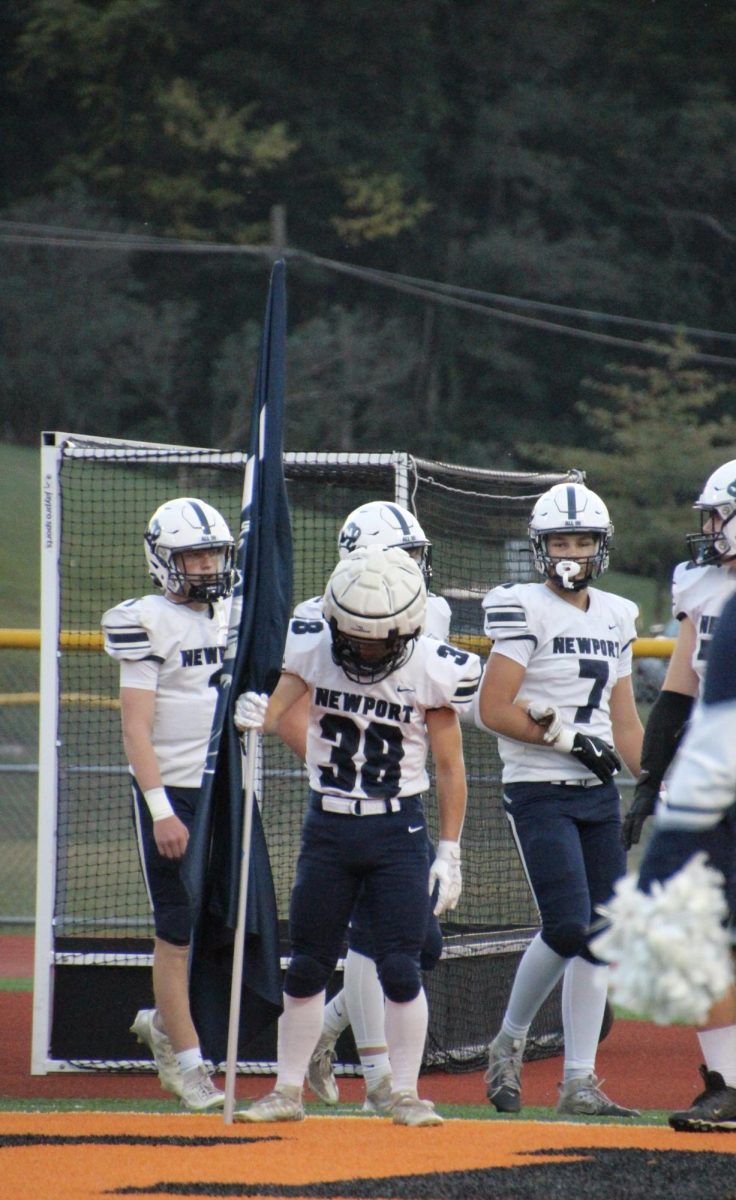This year began a new feature for high school and middle school students at Newport, known as Lunch and Learn. Lunch and Learn is Newport’s unique name for ‘flex’ periods based on the concept in the business world where employees gather over a company-sponsored lunch for professional development. The new addition allows students to choose their 5th and 6th-period destination. These classes change every two 6-day cycles, allowing students to modify their scheduled classes based on their needs. This replaces a 10th-period resource which acted as a study hall.
The school board approved Lunch and Learn because they felt Newport’s 10th-period study halls were unproductive and too unstructured for students. The decision to move the resource period to the middle of the day is not only based on data claiming students are more focused in the middle of the school day but also because so many other schools have added similar periods.
In the high school, as a Lunch and Learn cycle opens, teachers begin by selecting students needed for enrichment or intervention; they can also select club officers and members. A few days later, Sapphire opens for students to fill in any open periods and lunch. The cycle changes bi-weekly to account for progress in classes and upcoming events. This results in rotating schedules for lunch and potentially six different courses in a given cycle.
To address several complaints, for the past four years, a committee consisting of teachers, staff, and administration workshopped several different options to maximize the time in the existing schedule and eliminate the worst problems. To gain insight on alternative scheduling options, two years ago high school principal Mrs. Jocelyn Curtis, high school counselor Mrs. Katerina Grigoryan, and some teachers participated in a convention about scheduling and education where they learned about implementing the Lunch and Learn schedule. After several setbacks, the committee disbanded.
The counseling office completely set up and prepared the Lunch and Learn schedule last year, but the school board did not implement the change until this school year. The board had not approved the schedule change until the August board meeting in 2022, which was after the change was set up by the counseling office. The August 2022 board meeting was too late for the schedule to be used last year, so its application was postponed until this year.
“Overall, I was/am definitely in favor of a Lunch and Learn adjustment to the schedule. Through many conversations with other school districts, research and a few conversations with a scheduling expert through the CAIU (Capital Area Intermediate Unit) we felt the Lunch and Learn model could be beneficial for Newport,” said the director of curriculum, instruction, and assessment, Mr. Scott Mcgrady.
However, since its implementation, the new schedule has faced scrutiny from students and teachers alike. In a student poll that received 36 responses, students showed a slight belief that the Lunch and Learn schedule allows them to pursue clubs they want to take and catch up on work throughout the day (see figures 1.1 and 1.2 at bottom of page). However, the students generally did not think that the Lunch and Learn periods were an improvement on the 10th-period resource schedule from prior years (see figure 1.3).
The teachers, meanwhile, in a separate poll that received 11 responses, showed very strongly that they did not believe Lunch and Learn was better than 10th-period resource (see figure 2.1). Teachers strongly feel that the change gives them less time to plan and prepare for classes during the school day (see figure 2.2). Both students and teachers expressed that they minded having class during 10th-period (see figures 1.4 and 2.3). While consideration was given to athletes dismissed before the end of the school day, several athletes reported missing significant course time because of a core class scheduled during 10th period.
“I believe the current Lunch and Learn schedule is more beneficial for our students because it is in the middle of the day as opposed to at the end of the day. Studies have shown that having this time in the middle of the day is more productive than at the end of the day. The previous schedule also did not change throughout the year and did not allow the same flexibility that we currently have,” explained Grigoryan.
Almost half of the students reported using the Lunch and Learn periods for study halls. About half of the remaining respondents claimed they use the periods for clubs. Less than 3% of students reported signing up for or being signed up for enrichment/reinforcement periods (see figure 1.5).
Teachers have generally split opinions in the enrichment/intervention periods. Over a quarter of the teachers reported not using the enrichment/intervention periods because they are unnecessary. Additionally, 36% reported using the enrichment/intervention periods, half because they believe it helps their students in some way and half because they feel it “is expected” (see figure 2.4). Whether or not the enrichment/intervention periods help students was almost a completely split issue among the teachers (see figure 2.5).
In favor of the enrichment/intervention periods, one anonymous teacher respondent explained, “I use the enrichment and interventions very productively and wish I had more of them instead of study halls/clubs. Mine are typically full between students enrolling themselves and me requesting them.” Meanwhile, another anonymous teacher respondent, critical of the periods, commented, “Many of the students who most need the extra help aren’t doing the assigned work, and won’t do any additional work.” Additionally, although students that attend CPAVTS have the opportunity to attend clubs, interventions, and activities during 5th period (an option not available when resource period was during 10th period), teachers cannot schedule them into intervention courses and the students are not attending voluntarily.
Other aspects of Lunch and Learn are mere side-effects to its overall purpose. Students and teachers have to individually schedule their Lunch and Learn periods through the website ‘Sapphire’ every two 6-day school day cycles. Initially, students such as freshman Tyler Moffit expressed that constantly having to update the schedule was “annoying.” However, the majority of students and teachers feel that two cycles is an adequate amount of time to have a certain schedule, and the remaining minority did not express a particular preference for either an increased or decreased amount of time (see figures 1.6 and 2.6). Also annoying for some teachers is the constant search for missing students – those who can’t remember their schedule and those who try to attend sections where they are not assigned.
In addition, each day students’ and teachers’ lunch periods may be either 5th or 6th period. For teachers, their lunch period is assigned to them based on the period they have a class that day; students are expected to sign up for a lunch period in the opposite period to the class they selected. Thus, neither students nor teachers have a consistently scheduled lunch period. The vast majority of students and teachers feel that this bothers them and messes with their daily routine (see figures 1.7 and 2.7).
Overall, students show more enjoyment of the schedule than teachers. A quarter of students reported preferring 10th-period resource but still enjoying Lunch and Learn, and 36% reported simply that Lunch and Learn is a good change. Only slightly more than a third expressed not enjoying the change. (see figure 1.8) For teachers, over half believe that the change has negatively influenced teachers and students in some way, and another 18% do not see problems with the change but have not enjoyed it. A third of teachers in favor of the change still believe that 10th period resource worked fine (see figure 2.8). “The real problem is that this [the L&L period] is not what we were promised. We needed more structured time with students to work academically and more time with clubs to be productive. What we got was more administrative work – tracking missing students, scheduling students into sections bi-weekly, and watching kids eat during lunch. Like most good ideas, the concept is great, the execution isn’t,” claims another of the anonymous teacher responses.
Over three-quarters of the student respondents think that Lunch and Learn has issues, but half of these responders believe these issues can be fixed. (see figure 1.9) For the teachers, on the other hand, the vast majority, 81%, believe that Lunch and Learn has unfixable problems. (see figure 2.9)
“All programs, initiatives and ideas come with criticisms and concerns from the inception of an idea through implementation. My hope would be that we realize where we can improve Lunch and Learn to continuously make it better,” commented McGrady. “Feedback from teachers, students and staff are helpful in addressing the gaps that are found when putting a new program/initiative in place. Communication and collaboration will help to hone the particulars of the Lunch and Learn schedule and operations moving forward. With effort and focus on continuous improvement we will be able to realize the full potential of having the Lunch and Learn schedule.”
